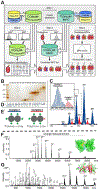Top-Down Proteomics: Ready for Prime Time?
- PMID: 29161012
- PMCID: PMC6138622
- DOI: 10.1021/acs.analchem.7b04747
Top-Down Proteomics: Ready for Prime Time?
Erratum in
-
Correction to Top-Down Proteomics: Ready for Prime Time?Anal Chem. 2018 Dec 18;90(24):14643. doi: 10.1021/acs.analchem.8b05506. Epub 2018 Dec 7. Anal Chem. 2018. PMID: 30522269 No abstract available.
Abstract
Conflict of interest statement
The authors declare no competing financial interest.
Figures








References
Publication types
MeSH terms
Grants and funding
LinkOut - more resources
Full Text Sources
Other Literature Sources

